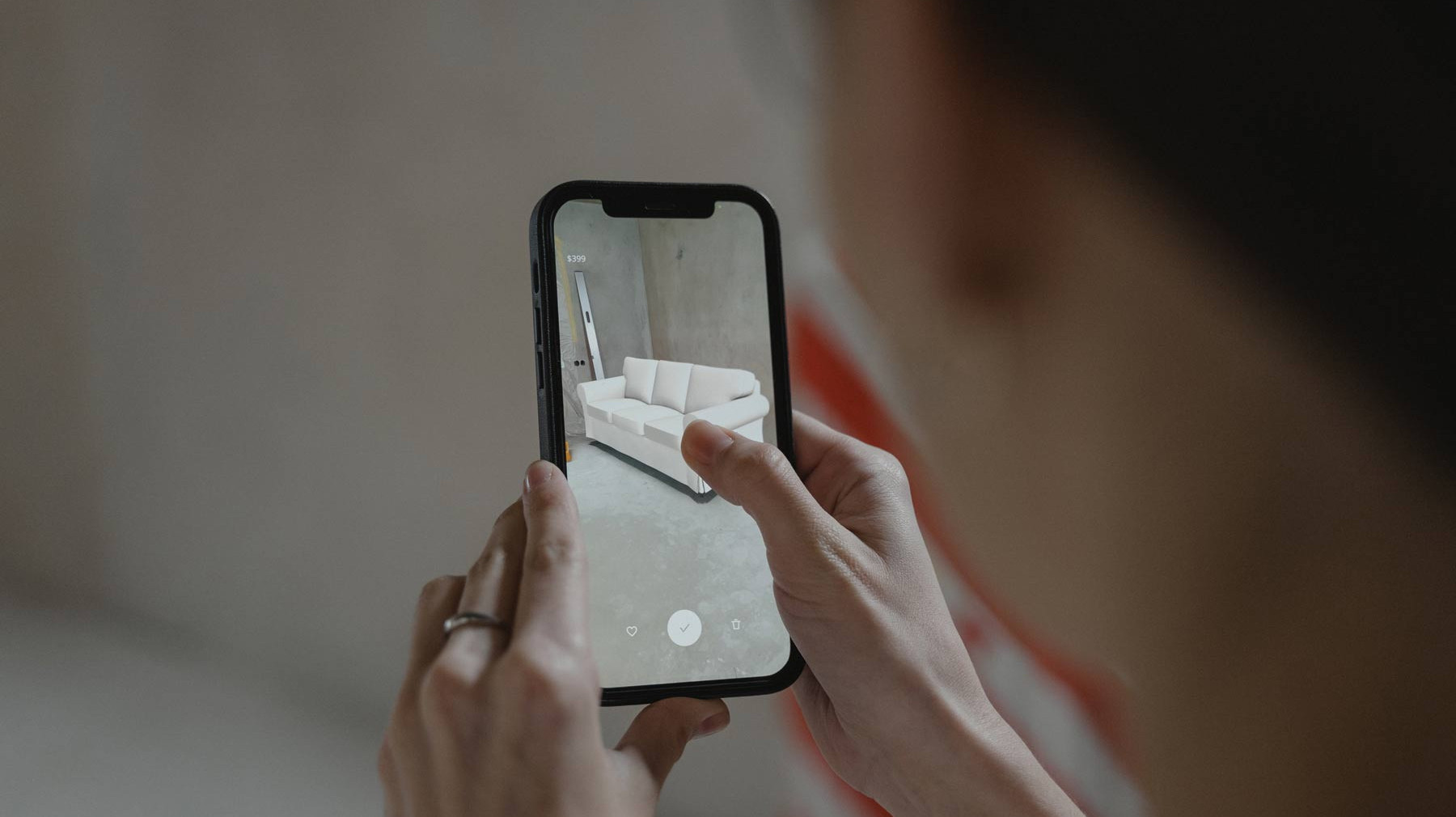Technology
November 2022
Learn How Augmented Reality Creates Better Experiences

The advent of innovative technologies has transformed how consumers and brands engage. One such technology transforming customer experience is augmented reality. Personalised shopping has taken on a more profound meaning as interactions become more visual. As companies delve more into this kind of tech, one thing is clear: AR will transform the market and will be a central component of shopping experiences.
Augmented reality is going to be a clear player in the digital marketing space. It essentially combines traditional business promotion methods in a novel way to create fully immersive experiences both online and offline.
Increasingly, brands are realising the potential of augmented reality and are integrating it into their daily operations. AR is transforming sales and customer relations. Investing in AR can give companies a competitive edge in an otherwise crowded market.
By overlaying digital information with the real world, AR has the potential to enhance businesses' interactions with their customers. Our latest article explores the possibilities of augmented reality in business and how it can be used to create better experiences.
How augmented reality works
Once thought of as a distant technology, AR is no longer too complex or expensive to be used by most. Now it's ready for implementation to boost sales and provide better experiences.
AR is where real and virtual connect. Unlike virtual reality, AR is not a simulation of reality. It adds value to the real world by overlaying images, text, graphics and objects on a user's screen for interaction.
A common example of how this works is when shopping online for glasses. As you're not in a real store, you cannot physically try on the glasses. However, through augmented reality, you'll be able to superimpose them on your face with to get a better idea of how you'll look wearing them.
Examples of current AR technology
Augmented reality applications have reached many sectors within various demographics. Here are some examples of how AR apps are being applied to various industries:
- Classic social media apps like Instagram and TikTok utilise augmented reality filters for their customer base. Pokémon Go also allows players to capture creatures through immersive AR experiences whilst interacting with the world around them.
- Various innovative technologies are being developed in the world right now. One example includes the metaverse, which will mix VR and AR. The metaverse is expected to dominate businesses and provide more engaging online experiences.
- The hospitality industry is using augmented reality QR codes that provide customers with a more visual experience when ordering menu items. It can make it easier for customers to view and add nutritional or ingredient annotations.
How AR is being implemented into business
There are several ways augmented reality can create better experiences, for example the retail industry is utilising AR to provide better customer after-care and encourage them to return.
Augmented reality is also used as a marketing tool to create more engaging experiences. By bringing products and services to life, customers can easily understand what businesses offer and how they could improve their lives.
Brands like Wayfair are using augmented reality apps that offer customers the ability to see how items will look in their homes before purchasing. This aims to create better customer satisfaction and fewer returns.
AR is also being used to provide simpler and interactive instructions to customers. For example, Hyundai became one of the first mainstream automakers to launch an AR owner's manual back in 2015. Using a smartphone or tablet, consumers could access information simply on their vehicles' repairs, maintenance and features. The app contained guides and 3D overlay images that would highlight when users scanned various areas of their vehicle.
If you're considering building an AR solution for your company, then there are various potential uses. With today's cutting-edge apps, augmented reality can be integrated into virtually every industry to drive conversions. This innovative tech creates visual connections between customers and the product, encouraging them to buy. So companies that adopt AR will reap a lot of benefits.
Here are some of the other ways we're currently seeing industries implement AR:
- Medical professionals no longer require human bodies to train fellow doctors and explain diseases to patients. Now AR can enhance our understanding of the human body.
-
As well as creating more interactive shopping experiences, augmented reality is also used within internal operations to improve customer service. By providing employees with access to AR, businesses can provide customers with relevant information and assistance. This can be extremely useful within retail, where employees can help customers locate items throughout the store.
- Augmented reality in manufacturing industries is providing workers with real-time instructions to improve efficiency and safety on the factory floor.
- The travel and tourism industry provides visitors with virtual tours and contextual information about their surroundings for a more immersive experience.
- In the education sector, students can explore virtual simulations of real-world scenarios, such as historical events and scientific experiments. Immersive experiences provide learning that's generally more effective than traditional methods of textbooks and presentations.
Enjoying what you're reading?
See our workHow augmented reality benefits businesses
AR has created new opportunities for brands to connect with their consumers, changing the market in unique ways and providing digital experiences that can transform the customer journey.
AR applications have become a powerful tool for companies to enhance the relationship between them and their customers. Brands can now build more valuable experiences than ever before. Here are a few examples of how augmented reality can benefit businesses.
-
Consumers can be discouraged from purchasing online due to the lack of interaction with the product. Now customers will be able to view and interact with products using AR. This will help establish confidence in online shopping and further increase sales.
- Sustainability is a shared responsibility and one that a lot of businesses are taking into account right now. Through AR, the environment will benefit significantly by encouraging fewer returns, reducing overstocks, and reducing physical consumption.
- AR is creating even better shopping experiences online. During the pandemic, e-commerce boomed, and AR will transform the online shopping experience to create better levels of customer satisfaction.
- Product packaging will become more visual and engaging for customers. By viewing a 3D image of the package, customers will be able to interact more with the product and gain a more valuable shopping experience. As a result, they'll be able to view details on products they may previously miss via augmented reality.
- Emotional experiences are one of the biggest influences that encourage buying decisions. If you’re emotionally connected to the product, you’re more likely to buy it. AR can encourage consumers to have more positive connections. By creating a more memorable shopping experience, brands increase the likelihood that customers will want to recreate those experiences.
It's worth considering if building AR is for practical purposes, creative marketing or potentially both. The benefits could create enhanced experiences for customers as well as shareable content that helps with brand awareness.
The future of AR technology
The future of AR is looking very promising. With the release of new and improved AR advances, the potential for businesses to create better experiences is increasing. Imagine walking into a store and viewing the product information displayed virtually in front of you or being able to view a property virtually before buying it. The possibilities of AR in business are endless.
As the technology continues to develop, we can expect to see even more innovative AR technology built. And so far, the response has been very positive - it's clear that AR is here to stay! If your business is not already using AR, then now might be the perfect opportunity to explore the possibilities.
Our final thoughts
There are endless possibilities for how business can use augmented reality to create better experiences. The key is to experiment and find out what works best for your business and customer base.
